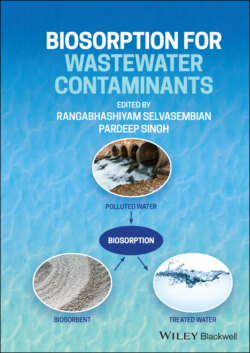Читать книгу Biosorption for Wastewater Contaminants - Группа авторов - Страница 38
Conclusion
ОглавлениеBiosorption is a low‐cost treatment for complicated commercial wastewater with high volumes and low heavy metal concentrations. Metal ions in an aqueous solution are replaced for a counter ion bound to biomass in this process, classified as ion exchange. The efficacy of the various biosorbents is unquestionably essential to the biosorption technology's promising potential. Several types of biomass that are abundant and exhibit strong metal binding characteristics have been recognized. Many natural biomass biosorbents have been established from cellulosic and microbial origins, with effective biosorption features. But several of these biosorbents have shown poor efficiency. Surface changes made to biosorbents have helped enhance their metal‐binding characteristics, as is apparent from extensive research; however, the adjustments increase the average operational costs to match the cost of commercialized ion‐exchange resins. The existence of multifunctional groups on the biomass surface causes it to be non‐selective to a particular metal ion. The biosorbents' non‐selective and unspecific character, as well as their lesser resilience, pose a significant marketing challenge. The creation of biosorption models and the identification of biosorption mechanisms, as well as the identification of better and more selective biosorbents, are all key future research topics for biosorption technology.
